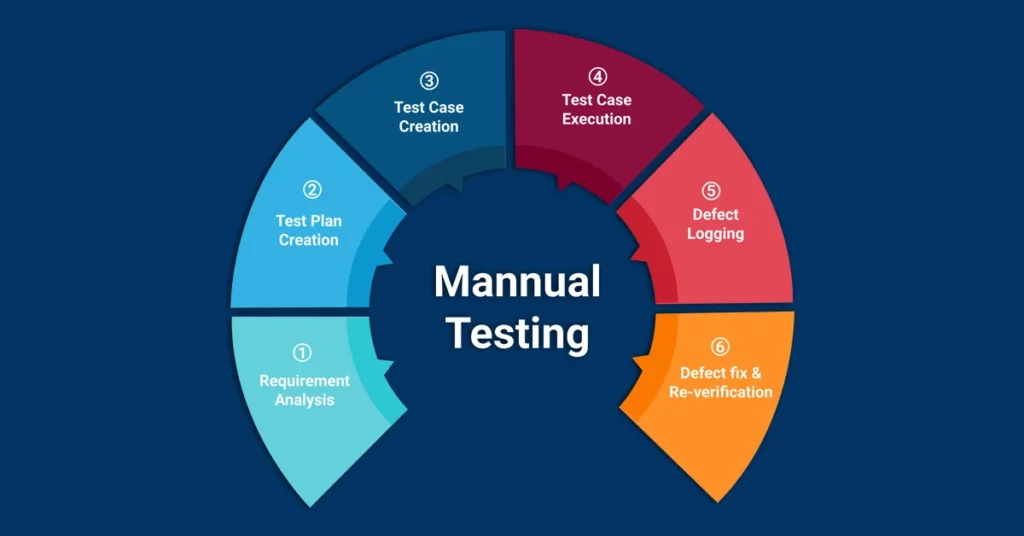Why Do QA Teams Still Need Manual Testing?

The QA team is a vital part of the software development life cycle which plays an important role in manual testing that has been around for years and will continue to be around for many more years as well. It can provide a lot of information about how the software works and can also help make sure the developers don’t miss anything important.
What is Manual Testing

Manual testing is a process where testers manually interact with software to determine whether it functions as intended. It can be used to identify issues with the user interface, the behavior of the program, and other areas of the software. It is often used in conjunction with automated testing to ensure that the software is functioning as intended.
Benefits of Manual Testing

There are many benefits to manual testing, even in the age of automated testing. Manual testers can quickly and easily identify bugs that automated tools may miss. Manual testers can also improve their skills by practicing manual testing techniques on real world applications. Finally, It can be a valuable part of QA process if it is used as part of a wider testing effort, rather than being used exclusively for finding bugs.
Types of Manual Testing
Manual testing is still a valuable part of the QA process, despite the existence of automated tests. It can be used to verify user interface (UI) and system functionality. It can also be used to test for smoke and leaks in applications, to find and fix defects in software development processes, and more. There are many types of manual tests that can be used in QA, each with its own benefits. Here are three types of manual tests that are commonly used in QA:
- UI Tests: UI tests are conducted to verify the accuracy and completeness of a user interface. They may include tasks such as verifying input fields are properly populated, verifying buttons work as intended, and checking screens display correct information.
- System Tests: System tests check for errors and malfunctions in an application’s underlying systems. They may check for issues such as improper data access or failed login attempts.
- Smoke and Leaks Tests: Smoke and leak tests check for potential problems in an application’s architecture that could cause it to fail or behave improperly. They may look for common defects such as cross-site scripting (XSS) attacks or SQL injection vulnerabilities.
Pros and Cons
Manual testing is a critical part of the Quality Assurance (QA) process, but there are still some reasons why QA teams need to use it. Here are the pros and cons of manual testing:
Pros:
-It’s cheaper than using automated tools.
-It’s more thorough and accurate.
-It can be customized to fit the needs of the QA team.
-It’s easier to find errors in manual tests than automated ones.
-It can be done on a smaller scale than automated tests, which is useful for scenario testing or beta testing.
-It can be done in a parallel fashion with automated tests, which helps improve test coverage.
Cons:
– Manual testing can take more time than using automated tools.
– It’s more difficult to maintain and update manual tests, because they require more attention to detail.
– Manual tests can be more difficult to debug, because they’re not as scripted as automated tests are.
Changes in Automated Testing over Time
One of the most visible changes in the testing world has been an increased reliance on automated testing tools. But despite this shift, it is still an important part of QA processes.
There are a few reasons for this:
- Automated tools can’t always find every bug. Manual testers are able to look for specific issues that automated tools may not be able to find.
- Manual testers are more familiar with the application and can spot potential problems that automated tests wouldn’t catch.
- Manual testers have a better understanding of how the application works under different conditions, which can help identify bugs that would otherwise go undetected when using automated tools.
Conclusion
Despite the advances made in automated testing, manual testing is still an important part of QA. It can be performed quickly and easily, which makes it a good fit for situations where high-quality results are necessary but time is tight. Additionally, it allows you to get to know your application better, which can help you identify issues earlier in their development cycle.
For more valuable information visit website


